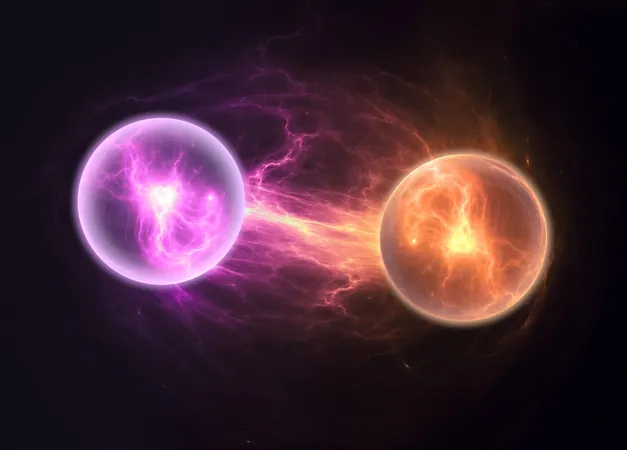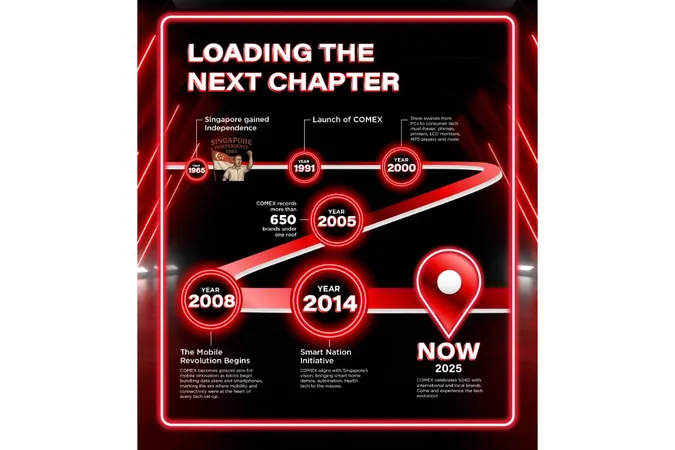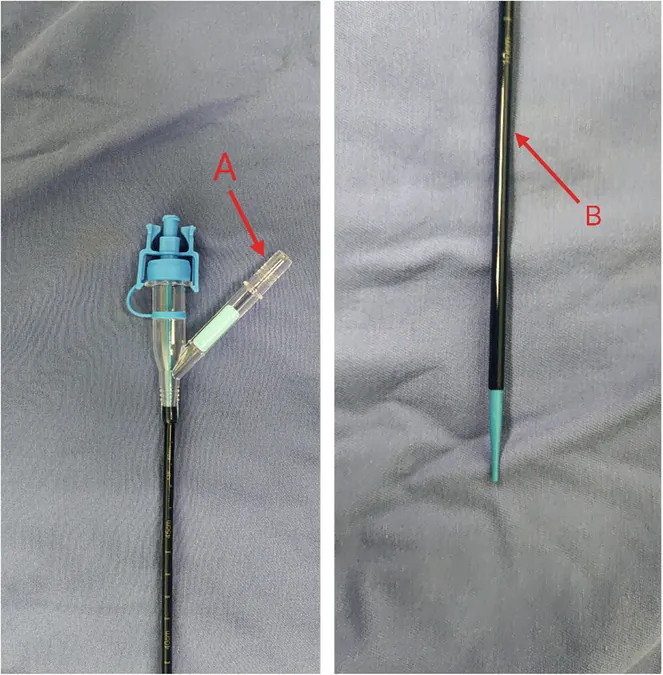
Revolutionizing Quantum Networks: The Game-Changing Concept of Recycled Entanglement
2025-08-04
Author: Arjun
Unlocking the Secrets of Quantum Entanglement
Quantum scientists have often treated quantum entanglement as a rare and fragile resource, generating new entangled pairs for every secure transfer of information or computation. However, a groundbreaking new theory suggests a more economical approach—recycling existing pairs to extend the reach of entanglement across networks.
Why Is Quantum Entanglement So Crucial?
Quantum entanglement connects the properties of particles in such a way that measuring one instantly reveals the state of the other, no matter the distance separating them. This extraordinary link is essential for technologies like quantum key distribution, distributed sensing, and even ambitious plans for a global quantum internet.
The Burden of Creating Fresh Pairs
Due to the impossibility of copying entanglement, applications have relied on producing new pairs on demand, often necessitating precision lasers or advanced cryogenic circuits. This dependency introduces significant challenges, slowing down progress in quantum network development.
A Thrifty Solution: Recycling Quantum Links
The recent study by experts from the Harish-Chandra Research Institute proposes a revolutionary idea: by allowing existing entangled pairs to pass portions of their entanglement down a chain, you can streamline network operations. This recycling method could drastically reduce the number of delicate qubit memories needed at future repeater stations, enabling longer-lasting quantum networks.
Transforming How Networks Handle Entanglement
In a theoretical model dubbed Alice and Bob, a single entangled pair can serve multiple participants. Newcomers, named Charu and Debu, would interact with Alice and Bob locally, receiving a portion of the entanglement without needing new pairs. Although each successive user receives a smaller amount, the protocol can potentially continue indefinitely.
The Mathematics of Sharing Entanglement
The authors established a mathematical framework demonstrating that this process can be reiterated, with a specific measure called 'concurrence' ensuring no party can claim more than its fair share. Despite this, real-world limitations will likely impose strict caps on the number of shareable entanglements.
Real-World Challenges and Opportunities
Engineering constraints, such as photon loss and detector errors, will inevitably limit entanglement sharing. Therefore, researchers must find a balance between recycling and generating fresh pairs. Early simulations suggest a diminishing utility after approximately a dozen rounds, but higher-fidelity setups, like superconducting circuits, may stretch this further.
Pioneering Experiments on Quantum Sharing
The proposed protocol could easily be tested within existing hardware setups, enabling demonstrations with microwave or optical qubits. Cross-platform trials designed to transfer entanglement between different systems could pave the way for more versatile quantum networks.
Future Prospects for Quantum Networks
This study raises intriguing new questions about the limits of entanglement sharing and its potential for future research. Policymakers looking to invest in quantum technologies will find this innovative approach especially appealing, as increased efficiency could yield quicker returns on significant investments.
Stay Informed!
The compelling findings from this study, published in Physical Review A, could herald a new era in the development and efficiency of quantum networks. Engage with us for more exciting articles and updates on the frontier of quantum technology!


 Brasil (PT)
Brasil (PT)
 Canada (EN)
Canada (EN)
 Chile (ES)
Chile (ES)
 Česko (CS)
Česko (CS)
 대한민국 (KO)
대한민국 (KO)
 España (ES)
España (ES)
 France (FR)
France (FR)
 Hong Kong (EN)
Hong Kong (EN)
 Italia (IT)
Italia (IT)
 日本 (JA)
日本 (JA)
 Magyarország (HU)
Magyarország (HU)
 Norge (NO)
Norge (NO)
 Polska (PL)
Polska (PL)
 Schweiz (DE)
Schweiz (DE)
 Singapore (EN)
Singapore (EN)
 Sverige (SV)
Sverige (SV)
 Suomi (FI)
Suomi (FI)
 Türkiye (TR)
Türkiye (TR)
 الإمارات العربية المتحدة (AR)
الإمارات العربية المتحدة (AR)